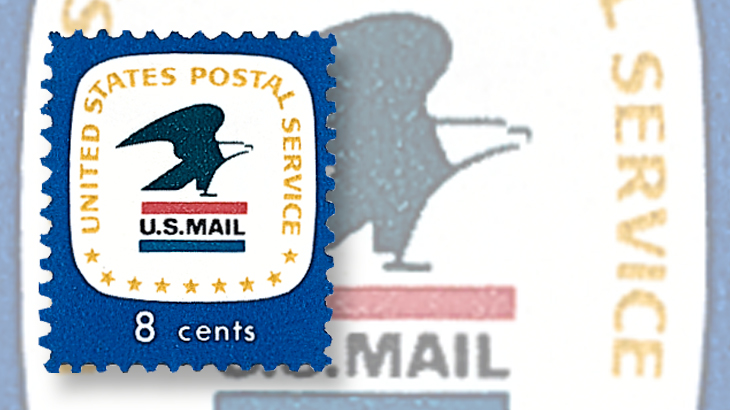Postal Updates
New book ‘Neither Snow Nor Rain’ traces history of U.S. Postal Service

By Bill McAllister, Washington Correspondent
This fast-paced history is a wonderful tale of the United States Postal Service.
Bloomberg Businessweek writer Devin Leonard has managed to capture the glories — and the follies — of this venerable, troubled institution as no recent author has.
His new book Neither Snow Nor Rain A History of the United States Postal Service should be a part of every U.S. stamp collector’s library for the simple reason that one cannot fully appreciate the nation’s stamps without understanding the governmental agency that produced them.
Connect with Linn’s Stamp News:
Sign up for our newsletter
Like us on Facebook
Follow us on Twitter
And this book tells it all, from how reluctant early postmasters general were to approve stamps in the first place, to the glories of the much-saved 1993 29¢ Elvis Presley commemorative.
In between there are delightful chapters on the Jenny Inverts, stamp collector Franklin D. Roosevelt, and other postal characters who have made the USPS a much beloved organization.
Leonard avoids any predictions on how to save the USPS from its current red ink crisis or offer suggestions about the future of letter mail, topics that are surely worthy of another book.
This book does put a number of issues facing the Postal Service in perspective.
It discloses that Postmaster General John “Jack” Potter, who endorsed the 2006 postal law that is responsible for most of the Postal Service’s continuing billion-dollar deficits, had private misgivings about the act.
Potter was privately “grim” about its prospects, the book says.
William Henderson, Potter’s predecessor, is quoted as asking him about the law, which has forced the Postal Service to pay billions in healthcare costs for its retirees in advance:
“I called Jack and said, ‘Is this a good thing?’ And he said ‘No,’ ” Leonard quotes Henderson as saying.
Potter’s concerns may have remained unknown, but the book makes clear that there were early, public warnings about another issue that would dominate the Postal Service’s future.
In 1977, a congressionally appointed committee warned that the USPS could lose 23 percent of its first-class mail by 1985 as more people began to pay their bills electronically.
Those alarms largely went unanswered until after the 2008 financial crash.
The crash forced USPS executives to finally realize their organization had to downsize quickly to cope with the dramatic loss of its valuable first-class mail the recession triggered.
That loss continues and shows no sign of abating.
There are other key disclosures in the book, such as how Richard Nixon got the National Association of Letter Carriers, an influential postal union, to endorse his controversial plan to remove the old Post Office Department from the presidential cabinet and transform it into an independent federal agency.
Charles Colson, one of his Nixon’s top aides, promised to give collective bargaining rights to postal unions.
With that assurance, the unions quickly fell in line and helped Nixon change the future of mail service.
What the book makes clear is that from the outset, members of Congress and politicians of all stripes have been intent on micromanaging postal issues.
One of the biggest headaches postmasters general have bemoaned is the current Postal Regulatory Commission.
Congress demanded that as a check on the Postal Service’s mail monopoly.
Lawmakers even meddled with the startup of airmail service, a remarkable achievement.
It is one of the proudest innovations that the USPS has made since the British government placed the management of its colonial postal service in the hands of Philadelphia printer Benjamin Franklin in 1737.
Lawmakers, including future New York Mayor Fiorello La Guardia, threatened to defund the new airmail project and turn the service over to the Army, the book points out. Postal officials managed to outmaneuver them.
There are a few, minor flaws in the book.
Postmaster General Anthony M. Frank ordered the 1993 Elvis Presley stamp printed over the objections of his own Citizens’ Stamp Advisory Committee, but Frank did not dedicate the stamp, as the book states.
That chore fell to Frank’s successor, Marvin T. Runyon, who presided over the dedication on a rainy night at Presley’s Graceland mansion.
Leonard seems to suggest that additional sheets of the 1918 Jenny Inverts might still be floating around, noting that “the famous biplane on the stamp was upside down on a number of sheets.”
True, postal inspectors found several additional upside-down sheets had been printed, but all those sheets were reported to have been destroyed.
These two quibbles aside, this is a gem of a book about one government agency that touches almost every American six days a week.
Keep reading about the U.S. Postal Service:
April financial results better than U.S. Postal Service predicted
USPS delivery woes confirmed by new Postal Regulatory Commission report
Congress set to address financial plight of U.S. Postal Service
MORE RELATED ARTICLES
Headlines
-
US Stamps
Oct 7, 2024, 3 PMMcMurtrie dismissed as APS education director following Sept. 21 arrest
-
US Stamps
Oct 7, 2024, 12 PMVasiliauskas named president of Mystic Stamp Co.
-
US Stamps
Oct 6, 2024, 5 PMApgar souvenir card available
-
US Stamps
Oct 6, 2024, 4 PMFirst Continental Congress and U.N. stamps receive Scott catalog numbers





